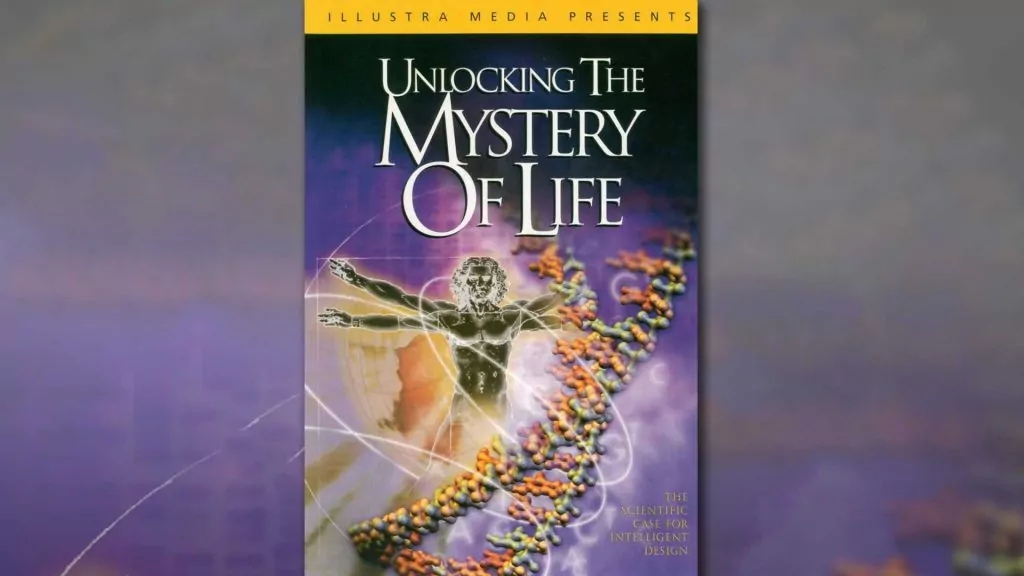Mainstream science – the sort we read about in the newspapers and gets taught in our public schools and universities – says we’re only modified monkeys. However, there’s evidence aplenty to undermine this modified monkey theory. And while evolution preaches we are matter and nothing more, that turns out to be philosophy, not evidence-based.
Back in 2019, the Intelligent Design think tank, the Discovery Institute began producing a series of videos designed, as their press release put it, to “directly confront the false views of science held by the growing number of science popularizers like Neil deGrasse Tyson and Bill Nye.” Specifically, they wanted to rebut materialism, the idea that we, and the universe itself, are nothing more than the matter we’re made of.
You might wonder at the strange Guy Fawkes mask with the monkey nose that shows up again and again. It’s one of those cultural references that may not have aged well because that’s a question a lot of people ask. The original Guy Fawkes was a Catholic who tried to blow up the English King James I. Not really a great role model. But a 2005 film, V for Vendatte (which I am not recommending) featured a rebel wearing a Guy Fawkes mask and the popularity of the film led to demonstrators around the world adopting the mask. And it’s that meaning that’s being conveyed here: they are protesting against the evolutionary tyranny….which is also why their version of the mask has been ape-ified.
The videos are fantastic, and at a fast-paced 6-11 minutes each, they are an easy watch with your older kids, or, if you are a teacher, with your high school students. The Discovery Institute isn’t a creationist organization, and some of the experts in the videos aren’t even Christian. What they do all agree on is that the science shows:
- more than materialism can account for
- evidence of an Intelligent Designer
Below I share a brief review of each episode, in the hopes that you’ll check them out. These really are as succinct and slick a presentation of the Intelligent Design argument as you will ever find.
So, grab some popcorn, shut off your phone and, for the next hour or so, kick back and enjoy the show!
SEASON 1
A creationist could endorse everything presented in this, the first of two seasons.
He would want to say more, however, because the Bible is never mentioned, and the Intelligent Designer the series argues for is never specifically named. That means, as compelling as its overall argument is – that creation points to a Creator – and as professional as the production values are, the project has a notable shortcoming. It ably tears down evolutionary arguments, but it never raises up God’s Truth. If we share this material with non-Christian friends, we need to also point out everyone’s need for the Redeemer, and share with our audience who this Savior is, the God-man Jesus.
Materialism vs. reality – Episode #1
The Bible says that the universe and all that is in it was created by Someone who is more than it and beyond it. But materialist science tells us “the cosmos are all there is, all there was, and all there ever will be.”
So is our universe matter and nothing more, and is it anti-science to believe that non-material things like love and consciousness are real? Dr. Jay Richards weighs in.
No, you’re not a robot made out of meat – Episode #2
Who are we? The Bible says we are physical and spiritual beings – we have a body, but we are more than our body. If I lose an arm and leg, I may have lost 25% of my body, but I am still all there – there isn’t 25% less of me.
And the evidence agrees. For example, it shows that our immaterial minds – our thoughts – can actually change our material brains.
The Programmer – Episode #3
The Bible says we are “fearfully and wonderfully made” by a Master Craftsman.
And what does mainstream science say? The materialist scientists reduce us to mere machines. And yet they have to acknowledge that “our DNA code is more complex than any man-made software…” And as Stephen Meyer explains, our observations of the world show us “information always arises from an intelligent source.”
You don’t suck – Episode #4
The Bible declares that Man is something special, created in the very image of God (Gen. 1:26-28).
Materialist science has a very different perspective. As Bill Nye puts it, “I am a speck on a speck, a whirling speck, among still other specks in the middle of specklessness….I suck!” At the same time, scientists are discovering that this supposedly purposeless universe seems to be especially and improbably fine-tuned to not just support life but to enable us to thrive.
How do the materialists explain that? By proposing this is just one of millions or billions or trillions of universes out there, and this is the one where everything came out just right. One problem: as physicist Frank Tipler explains there’s exactly as much evidence for this “multiverse theory” as there is for the existence of unicorns and leprechauns.
The origins of life – Episode #5
The Bible says that life was designed, and came about by an extraordinary supernatural act of God. In contrast, materialist science says that life came about by simple, random, unguided chemical interactions.
But if life really could come about by sheer unintended luck, then why haven’t the world’s most brilliant scientists – with their billions of dollars in equipment, awesome computing power, refined chemicals, and ready blueprints all around them – ever been able to create life on purpose?
Mutations break; they don’t create – Episode #6
The Bible says that due to Man’s Fall into Sin the perfect world that God created is broken, and wearing out (Isaiah 51:6, Ps. 102:25-26). In this worldview it is no surprise that mutations are harmful, causing things like cancer. It’s no surprise because Christians understand that we as a species are breaking down.
But evolutionary theory says Mankind is the end result of a long process of beneficial mutations that changed us and improved us, progressing upward from life’s simple origins as a single cell, to eventually evolve into the incredibly complex creatures that we are today. Evolution says that we as a species are improving.
So which worldview fits best with the evidence? Do we see mutations improving us, or harming us? A closer look at the science shows that mutations don’t have the type of creative power that evolution proposes and needs.
SEASON 2
While the first season sticks to points that creationists could enthusiastically agree with, the second season occasionally conflicts with the biblical account by incorporating some evolutionary presumptions, like a timescale of millions of years, or the evolutionary take on the geological “record.” It’s worth noticing, though, that even were we to presume millions of years, evolution still doesn’t have the answers.
Big bang: something from nothing? – Episode #7
The Bible says God created in six days, just some six thousand or so years ago. Evolution proposes a Big Bang billions of years ago. While this video argues for the Big Bang, it also highlights how even the Big Bang leaves evolutionists the problem of accounting for how something, or rather everything, came from nothing.
Human evolution: the monkey bias – Episode #8
Does the fossil record really support the evolution of humans from ape-like ancestors? This episode highlights the scant evidence, and shares how the evidence there is has been manipulated, and even sanded off, to align with evolutionary assumptions.
Fossils: mysterious origins – Episode #9
Evolution can’t account for the sudden appearance of life that repeatedly occurs in the fossil record. That’s a devastating problem for Darwinian evolution.
But what sort of answer can Intelligent Design offer? They offer up the very general idea of an “intelligent mind” intervening. Who was that intelligent mind, and how did they engineer these various species. The specifics don’t really come up in this video.. Creationists have their own proposals though which don’t presume repeated creative acts. They look at the geological column as evidence of a worldwide flood, rather than a history of millions of years.
AI: will machines take over? – Episode #10
As computers become ever and increasingly more powerful, will they become thinking machines? The folks who say so think that we’re nothing more than computing machines ourselves, merely the sum of our parts. But Christians know we are made in the very Image of our Maker (Gen. 1:27), and that’s not ever going to be true of machines.
The picture at the top of the page is a screenshot from episode #6.















